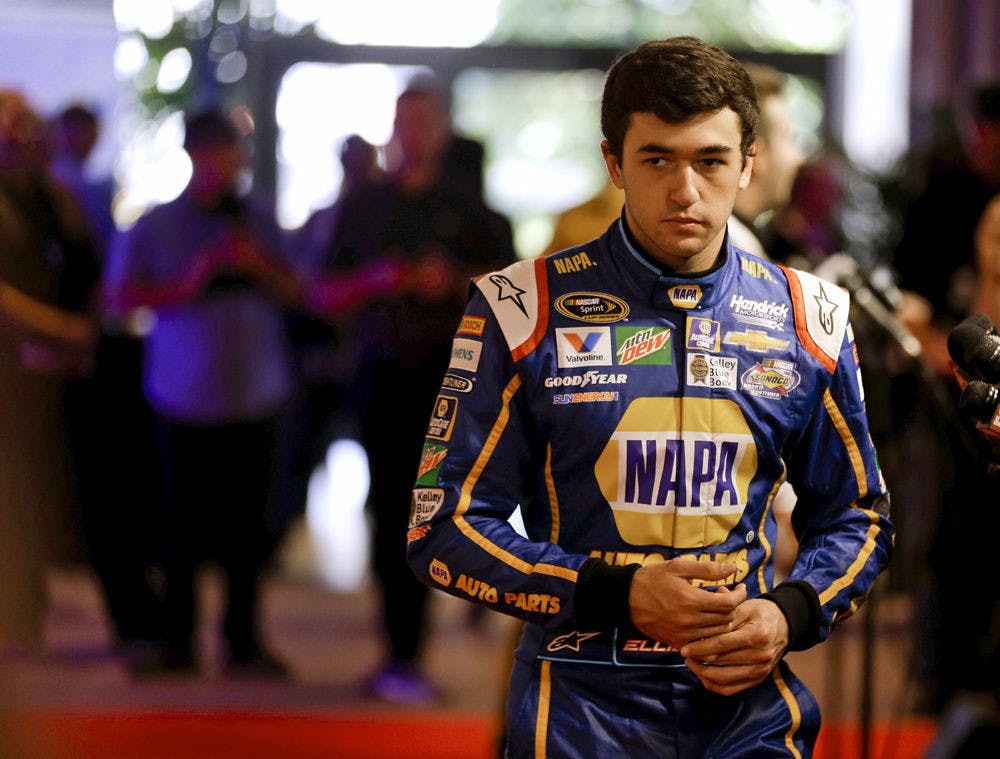Change is in the ocean breeze at Daytona.
NASCAR’s top teams and drivers kick off their seasons on Sunday in the Daytona 500, the biggest event on the schedule and a race that has defined careers and cemented legacies of the sport’s greatest figures.
But this year is different.
Sunday isn’t just the Daytona 500 — it’s the beginning of a transitional year for NASCAR, one that will define and determine its future for better or worse.
First, the drivers.
Four-time champion Jeff Gordon, arguably the most successful and recognizable driver in the modern era, has left the famous No. 24 car and moved to the television booth.
Tony Stewart, a three-time champion in his final season before retirement, is out indefinitely with a broken vertebrae and will likely miss a large chunk of the year, if he returns at all.
Aside from Dale Earnhardt Jr., they have been the two most popular drivers for well over a decade, and many fans of Gordon and Stewart will be left to either pick a new driver to root for or choose to no longer watch.
It’s a similar situation to what golf went through a few years ago, when Tiger Woods and Phil Mickelson struggled to contend regularly before phenoms like Jordan Spieth and Rory McIlroy emerged to breathe life back into the sport.
But NASCAR is still searching for its future star.
Many hope it will be Chase Elliott, the 20-year-old son of Hall-of-Famer Bill Elliott who has impressed in NASCAR’s lower series — he won an Xfinity series championship while still in high school — and is taking over Gordon’s No. 24 car.
Elliott is already off to a good start — he kicked off his rookie campaign by becoming the youngest-ever Daytona 500 pole winner on Sunday.
Other hopeful successors include 22-year-old rookie Ryan Blaney, a multiple-time winner throughout NASCAR’s lower series who has a wealth of raw talent. There's also Kyle Larson, a 23-year-old entering his third season in the Cup who has already challenged for wins and is considered one of the best young drivers already in the Cup series.
NASCAR needs one of these three or another young gun to become relevant to help keep the sport relevant.
Second, the cars.
NASCAR has implemented yet another new rules and aero package for the cars in 2016, designed to have less downforce on the cars in order to create more side-by-side racing.
Since the Gen-6 car was introduced with great success in 2013, the quality of racing has declined progressively each year, mainly due to the limited amount of passing.
The lack of action on the track has led to a steady decline in television ratings and attendance at tracks, a particularly troubling trend considering that was the case while the Gordon and Stewart were still competing.
The sport needs this new rules package, which has the support of the drivers, to be successful to make the on-track product more exciting.
Lastly, as just mentioned, NASCAR’s tracks across the board have been dealing with significant declines in attendance, and many have torn down grandstands to more accurately meet ticket demands.
Many races that used to see 175,000 people in attendance are now happy to get half that number.
Daytona International Speedway, the sport’s crown jewel, just completed a massive two-year renovation, reducing grandstand capacity from 160,000 to just more than 100,000.
However, Daytona has also made state-of-the-art upgrades to its facilities, which are now designed to better accommodate the modern fan in terms of interaction, WiFi, food, etc.
If effective, it could be the blueprint for other tracks to follow in order to get fans back in the seats.
All of these factors combine to make 2016 a crossroads year for NASCAR, and the sport’s future likely rides in the balance.
Graham Hack is a sports writer. Contact him at ghack@alligator.org and follow him on Twitter @graham_hack24.
Chase Elliott walks to an interview during NASCAR media day at Daytona International Speedway, Tuesday, Feb. 16, 2016, in Daytona Beach, Fla. (AP Photo/John Raoux)






